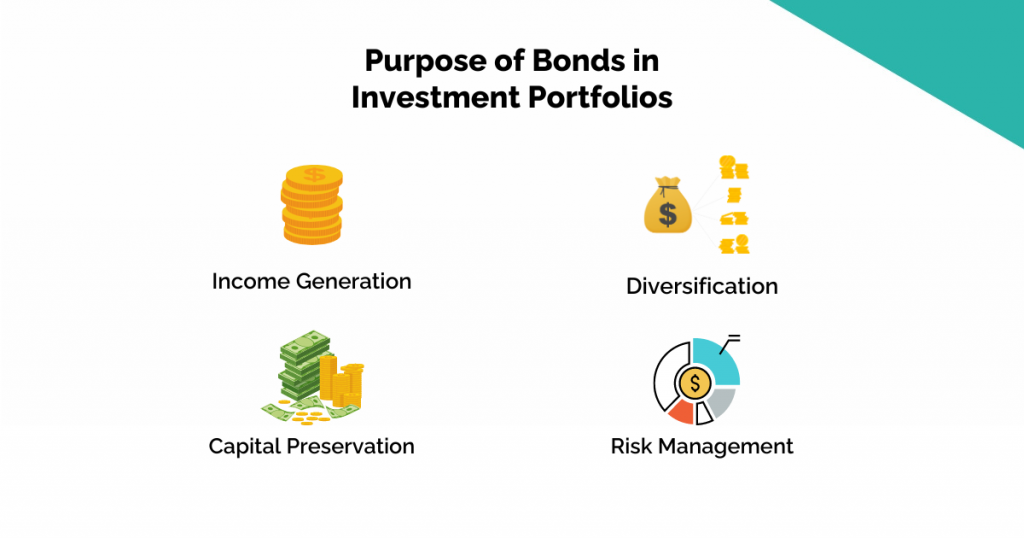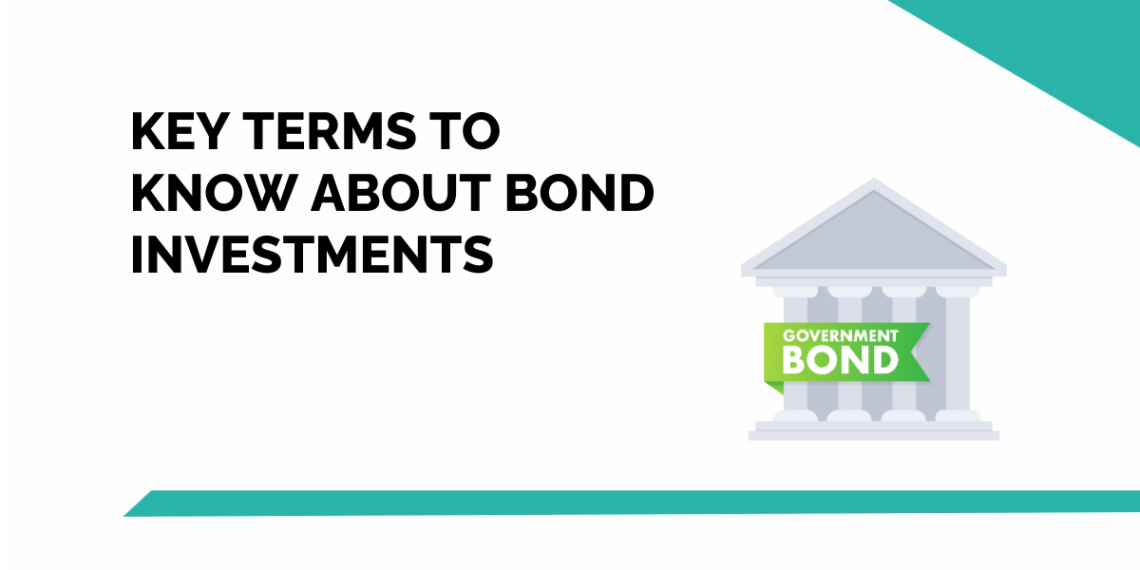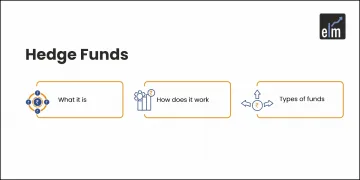It is crucial to invest in bonds and understand the basic terms related to bond investments for a number of reasons. First of all, bonds are a great way to diversify an investment portfolio. In contrast to stocks, they usually have different risk profiles and can offer a consistent income stream in the form of monthly interest payments.
Understanding important phrases like “coupon rate,” “maturity date,” and “yield” enables investors to evaluate the risks and possible returns of various bonds. Making wise investing selections based on personal risk tolerance and financial objectives is made easier with this knowledge.
Bonds are also very important for risk management. Through understanding terms such as “credit rating” and “yield to maturity,” investors are able to appraise issuer creditworthiness and gauge how interest rate fluctuations may affect bond prices.
Bond investments provide as a hedge against inflation and market volatility. Bonds of some kinds, such as TIPS and Treasury bonds, offer stability and defence against price increases.
In today’s blog, we will discuss Key Terms to Know About Bond Investments-
What are Bonds?
Fixed-income instruments known as bonds are issued by corporations, governments, municipalities, and other organizations to raise money from investors.
Purchasing a bond is simply giving money to the issuer in return for periodic interest payments or coupons and the principal amount returned when the bond matures.
Bonds give investors a set time frame for their investment and a predictable revenue stream because they usually have predetermined interest rates and maturity dates.
What is the Purpose of Bonds In Investment Portfolios?
Here is why one should invest in bonds:

Income Generation
The ability of bonds to pay interest on a regular basis determines their value. They are therefore especially appealing to investors seeking steady cash flow or to retirees seeking steady income streams.
Diversification
Bonds are an essential component of a diversified investing strategy. They frequently have less connection with stocks, which can lessen the risk and volatility of the entire portfolio. Bond investments can give a portfolio a more evenly distributed distribution among asset classes.
Capital Preservation
Government bonds in particular are seen as comparatively safe investments. They can act as a buffer and aid in capital preservation when the market is volatile or the economy is unclear.
Risk Management
Bonds can be used as a hedge against certain risks, like inflation and changes in interest rates. Certain bonds, such as Treasury Inflation-Protected Securities (TIPS), alter their principal value in response to changes in the Consumer Price Index (CPI) to provide protection against rising inflation.
What are the Types of Bonds?
Below are the types of bonds-
1. Government Bonds
National governments issue government bonds to fund public spending and oversee fiscal policy. The U.S. government’s Treasury bonds, the German government’s Bunds, and the Japanese government’s bonds (JGBs) are a few examples.
2. Corporate bonds
These are securities that companies issue to raise money for a range of uses, including operations, expansion, and debt refinancing. Compared to government bonds, corporate bonds provide greater yields, but their credit risk varies according to the strength of the issuing firm.
3. Municipal Bonds
State or local governments may issue municipal bonds (Munis) to finance public works initiatives like building new infrastructure, hospitals, or schools. Tax benefits, such as exemptions from federal income tax or state-specific tax advantages, are possible with municipal bonds.
4. Asset-Backed Bonds
Bonds backed by certain assets, such as mortgages, auto loans, or credit card receivables, are known as asset-backed securities, or ABS. Principal repayment and interest payments are financed by cash flows from the underlying assets.
5. High-Yield Bonds
Junk bonds, often known as high-yield bonds, are bonds issued by corporations with higher risk profiles but with lower credit ratings. In order to make up for the higher default risk to investors, these bonds have higher yields.
Key Terms to Know About Bond Investments
Here are some key terms that you should know before investing in bonds-
Issuer: The organization issuing the bond, which could be a municipality (municipal bond), corporation (corporate bond), or government (sovereign bond).
Face Value (Par Value): The bond’s principle, which the issuer agrees to pay back when it matures. Although they might trade above or below par on the secondary market, bonds are normally issued at par value.
Coupon Rate: The annual interest rate, usually stated as a percentage of face value, that the bond issuer pays. Typically, payments are given every six months.
Maturity: The date by which the issuer is required to give the investor back the bond’s face value. The maturities of bonds can range from a few months to several decades.
Yield: The total amount of money you stand to gain from investing in bonds, including coupon payments and potential capital gains (or losses) at the time of bond sale. Yield can be computed in a variety of methods, including current yield, yield to maturity (YTM), and effective yield.
Credit Rating: An evaluation of the issuer’s creditworthiness that shows how likely it is that they will honour their bond repayment commitment. Bonds are rated with letters (AAA, AA, A, BBB, etc.) by major credit rating agencies such as Moody’s and Standard & Poor’s; the greatest credit quality, or AAA, indicates that the bond is most likely to be repaid, while lower ratings indicate an increasing chance of default.
Callable Bonds: Bonds that are callable have the option to be redeemed (bought back) by the issuer before to the bond’s maturity date, typically at a price higher than the face value.
Puttable Bond: A bond that, under certain circumstances, the investor may sell back to the issuer before the bond’s maturity date.
Duration: A gauge of how sensitive a bond is to interest rate fluctuations. Interest rate changes have a greater effect on the price of bonds with longer periods.
Convexity: It is a metric used to quantify the fluctuations in the price-to-interest rate relationship of bonds. When interest rates decline, the value of bonds with higher convexity increases more than that of bonds with lower convexity.
Investment-grade bonds: They are those that have a credit rating of BBB or better from reputable rating organizations and are thought to have a low default risk.
High-yield bond: Often known as a junk bond, is a bond that has a credit rating lower than BBB and is thought to carry a higher default risk but may yield larger yields in exchange.
Zero-Coupon Bond: A bond with no regular coupon payments made to it. Instead, the investor receives a return by getting the face value at maturity, and it is sold at a discount to its face value.
Conclusion
Gaining knowledge of important bond jargon will help you negotiate the bond market. Understand concepts like coupon rate, issuer, and maturity to evaluate the fundamental structure of a bond. Yield and credit ratings are useful tools for assessing risk and possible return. Bond sensitivity to interest rate changes is revealed by more complex ideas like duration and convexity. Knowing these terminologies can help you decide whether to add bonds to your investing portfolio while taking your financial objectives and risk tolerance into account. Recall that investing entails risk, so before acting, do your own homework.
For market updates, Visit StockEdge







